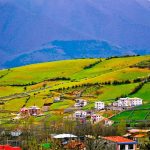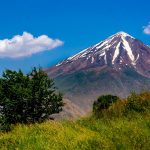If we were to tell you about a country with a civilization as old as time, a vibrant food culture that would blow your mind away, and a diverse and colourful cultural heritage, you would probably think of Italy, Greece, or even China. Right? Well, wrong. As beautiful as these countries are, we’re here to tell you about a less explored but equally charming destination – Iran.
Iran has long been neglected by tourists as a worthy destination despite having lots to offer. This has been partly due to the bad press it has received over the years, portraying the country as the region’s boogeyman. But in reality, Iran is a beautiful country with a unique culture and history that oozes heritage and ancient charm.
Iran is packed with spectacular historical and natural landmarks, making it an exciting destination for nature enthusiasts and culture lovers. Get out of your comfort zone and explore a new world of lively bazaars, stunning mosques, captivating nature, mouthwatering cuisine, thrilling adventures, and beautiful people.
So, if you’re looking for a unique, safe, and cheap travel experience, then Iran is one to add to the list. Here, we have outlined 8 reasons why we think Iran deserves a place on your bucket list.
1. Safety
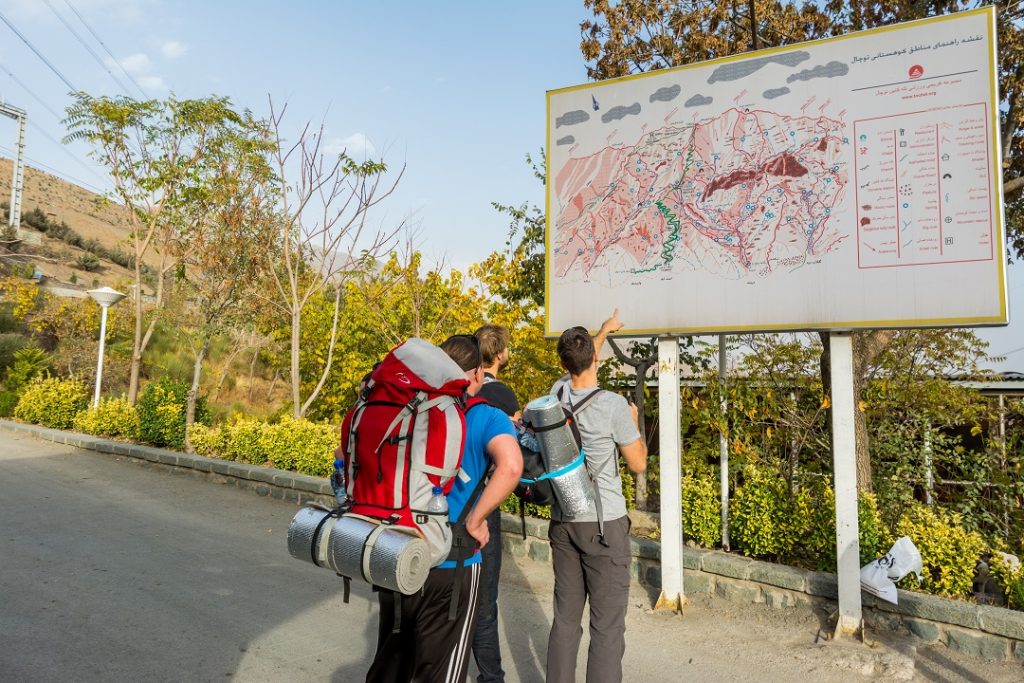
Let’s start by addressing the elephant in the room. Is Iran a safe destination for tourists? Well, the short and the long answer is yes. Unfortunately, given the current climate, the instability of the region on the whole, and the overall political rhetoric surrounding the country since the Islamic revolution, many view Iran as a hostile and unfriendly destination.
Though we understand any reservations you might have about visiting Iran, we also believe it is essential to step away from the prejudices and perceptions and view Iran in a more realistic light. Unlike what certain media would have you believe, Iran is one of the safest and friendliest countries in the Middle East. Terrorist attacks, kidnappings, and mass killings are very uncommon. Just stay away from sensitive issues (mainly political and religious), and you should be fine.
Most nationals can easily receive a visa and face no restrictions in travelling solo around Iran. Only British, American, and Canadian citizens must book a tour with authorized travel agencies. They are required to travel with a certified guide at all times. However, no matter your nationality, we strongly recommend you keep away from regions bordering Iraq and Afghanistan, which for obvious reasons, are considered a high-security risk even for Iranians. Also, ensure to look after your valuables since pickpocketing and petty thefts can happen like anywhere else in the world.
Now that we’ve established that Iran is safe for you to visit let’s move on to more fun topics.
2. The Food
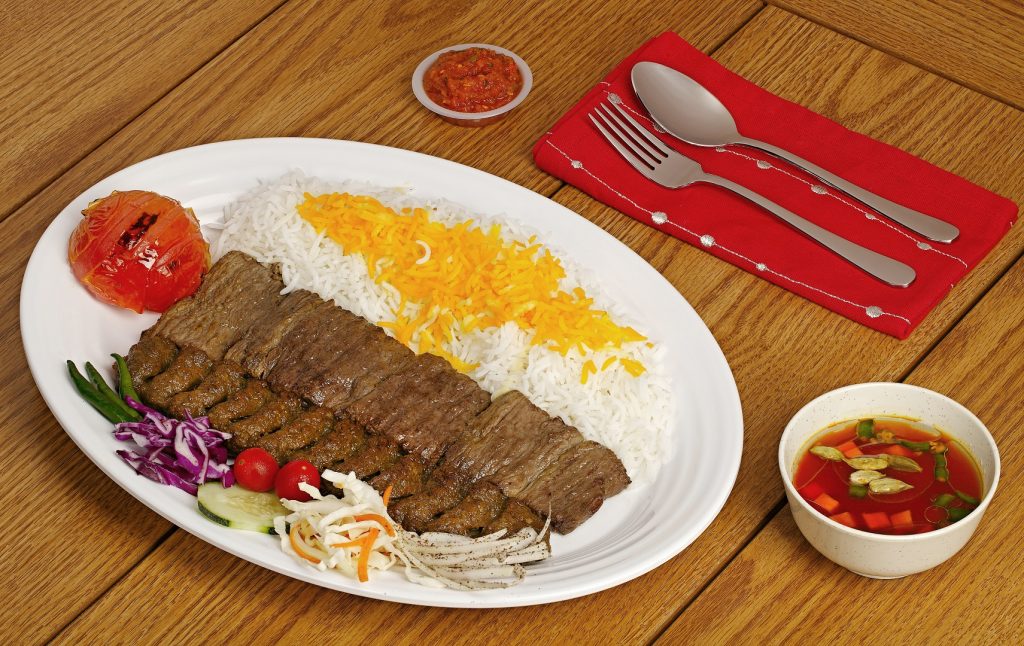
For many people, their experience of Persian food is limited to Kababs. Undoubtedly a beloved staple, the famous dish barely scratches the surface of this diverse and underexplored cuisine. But thanks to the efforts of numerous Iranian chefs and cooks in recent years, more Persian dishes have burst into the global food scene. Tahdig – the prized golden crunchy rice crust is having its moment, while Shirazi salad is enjoying growing fame on TikTok.
Persian cuisine is an ancient gastronomy that spans thousands of years and has had a remarkable influence on not just middle eastern cuisine but food as far as India, Turkey, China, and North Africa. Deeply rooted in history, tradition, and mythology, Persian food is central to Iranian culture – it tells the tales of the past, of dynasties, travellers and conquerors who have changed and refined Persian cooking to what it is today. And what better place to experience this fantastic cuisine than Iran itself?
So, when travelling to Iran, make sure to bring your appetite with you because there’s so much to taste and sample.
Iranian food culture is incredibly vibrant and colourful. Various ethnicities living in Iran have diversified Persian cuisine, each region having its own specific dish; shaped by its distinctive culture and geography. Apart from diversity, Persian food is unique in its combination of ingredients and flavours. Fresh herbs, fruits, nuts, and meat are slow-cooked into elaborate stews, thick soups, pilafs, and kababs, perfumed with saffron, cinnamon, and cardamom, creating a harmonious blend of colour and aroma. Pomegranates and dried limes are added to create contrasting flavours that swing between sweet and sour.
Rice, along with its Tahdig, is the centrepiece of any dish. In a typical Iranian meal, you are served a plate of rice topped with colourful, fragrant stews or delicately marinated tender kababs, accompanied by freshly baked bread, a plate of fresh herbs known as Sabzi Khordan, and thick yoghurt dips mixed with fresh mint, shredded cucumbers, and rose petals. Traditional Persian drinks include aromatic Sherbets prepared with rosewater and saffron and a fermented yoghurt drink called Doogh. For dessert, you can choose from a wide array of pastries or try the Bastani Sonati – a rich, creamy ice cream packed with saffron, chewy pistachios, and rosewater. It’s truly a work of art!
Persian cuisine is an endless feast of colours, tastes, and textures. From street food and late-night bites to fine dining, Persian cuisine offers an infinite selection of tasty dishes. Travelling across Iran, make sure to sample the local food, as each region has something unique to offer. Moving from north to south of the country, flavours shift from sour in the north to sweet with subtle spice notes in the centre and quite spicy in the south.
3. The Arts and Architecture
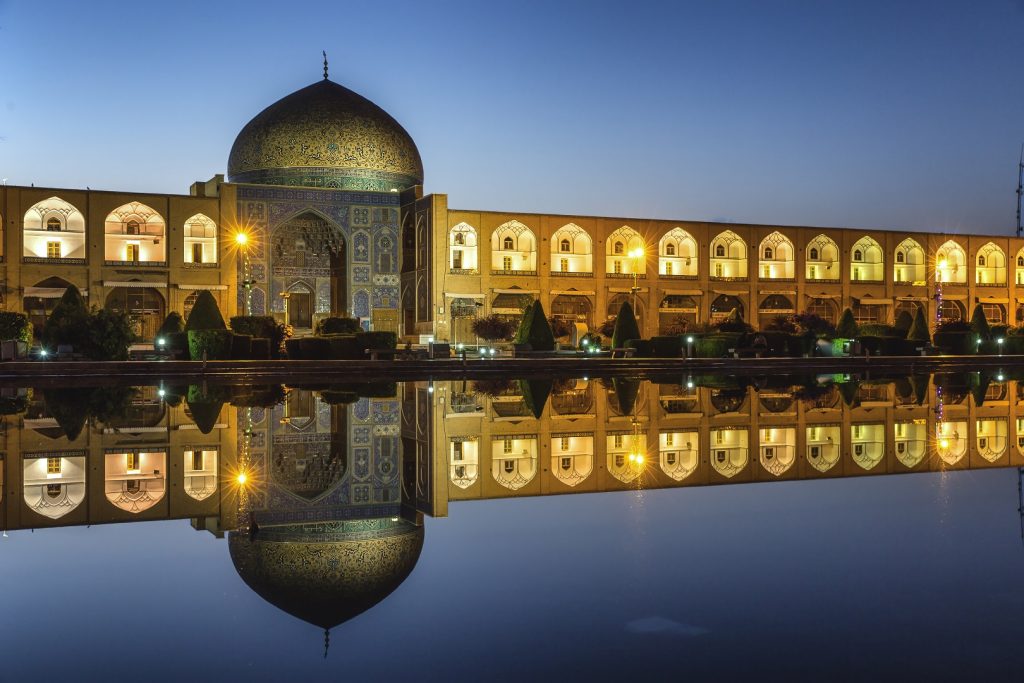
Undoubtedly Iran has one of the oldest and richest artistic traditions. Spanning a vast region, Persian art was hugely influenced by the arts and cultures of the various people within its empire. Eclectic in nature, Persian art includes a wide range of disciplines, including literature, architecture, music, dance, pottery, painting, weaving, and metalworking. Persian art was hugely influenced by religion, mythology, and its environment in all its styles and stages.
Persian art is mainly characterized by its use of vivid colours, complex patterns, and elaborate craftsmanship, enthralled in deep symbolism. Flower, bird, and animal motifs feature heavily in Persian art. The mysticism and lyricism of Persian art are finely displayed in the glorious frescos of Chehel Sotoun, the mesmerizing interior of Vank cathedral, the thrilling lines and the sophisticated geometric shapes of colourful mosaics.
Among the various disciplines, Persian architecture best reflects the country’s opulence and long history. Its values and philosophies are illustrated through its magnificent buildings – from ancient ruins and royal gardens to majestic mosques and grand bazaars. Iran is home to some of the most spectacular pieces of architecture. Whether it’s the photogenic pink mosque in Shiraz, the imposing Shah mosque in Isfahan, or the traditional houses in Kashan, you will notice specific characteristics that ensure unity and continuity across various architectural styles and stages.
Persian architecture is defined mainly by its symmetrical layout, creating harmony between the natural and the man-made, vivid colours, elaborate decorations, complex geometric shapes, and gardens and water features. These characteristics exist in all Persian architectural landmarks, whether in ancient Persia or Medieval Islamic eras.
Walking among the ruins of Pasargadae, you can hear echoes of an ancient civilization. Persepolis, a sight of imposing magnificence, is an impressive testimony to the glory and splendour of a bygone empire. The majestic palace complex, with its grand palaces decorated with detailed stone reliefs, is a prime example of ancient Persian architecture.
Iran is also famous for its beautiful handicrafts. Persian decorative arts are very diverse and deeply rooted in history and tradition. They represent the beliefs, morals, and skills of the various ethnicities and are often made through painstaking craftsmanship. Among the many ancient crafts, carpet weaving is one of the oldest and most important Persian handcrafts, appreciated for its beauty and intricacy.
4. The Cultural Heritage

As a cultural powerhouse, you can’t deny the fundamental impact Persian culture has had on human civilization and the world as we know it today. Throughout its long history, Iran has been a melting pot of different ethnicities and religions. By creating a culture of tolerance and acceptance since the early years of the Persian Empire, other ethnic groups have been able to coexist and thrive under one banner. The Persian culture has been integral in creating a distinct cultural identity that has survived the test of time and has been unyielding to conquering forces.
Persians have always had a unique way of immersing their conquerors into the Persian culture rather than it being the other way around. Be it Alexander of Macedonia, the vengeful Muslim Caliphates, or the brutal wrath of the Mughals, no emperor or caliphate was ever successful in diminishing the Persian culture and language. To this day, Iranians still celebrate their ancient traditions despite centuries of oppression and persecution.
The Persian cultural heritage is a source of immense pride for all Iranians – it is what sets them apart from the neighbouring Arab culture and that of south and central Asia. It is the consolidating force that unifies Iranians across ethnicities, religions, and opinions. The rich and colourful Persian culture is perhaps best illustrated through its unique traditions and celebrations, such as Norooz – the Persian new year, and through art disciplines, such as traditional Persian music and literature.
There are endless museum trips and walking tours you can sign up for to experience life and culture in Iran in the most authentic way.
5. The History

Visiting Iran simply means roaming through a distant past, uncovering layer upon layer of history. As one of the world’s oldest continuous civilizations, Iran evokes much history and culture. Travelling across Iran, you will find yourself surrounded by remnants of a glorious past. You will find beautiful manifestations of the country’s extensive and fascinating history hiding at every corner.
Emerging as the world’s first empire in 500 BCE, Persian history is filled with riveting tales of conquest, triumph, defeat and betrayal. For two millennia, Iran has witnessed the rise and fall of a series of mighty empires and dynasties; all leaving an everlasting mark on the country.
Iran’s history can be divided into two major eras; ancient Persia, which saw the rise and fall of several powerful empires – remnants of this glorious era can be found mainly in the Fars and Kermanshah Provinces, where remains of Achaemenid and Sassanid palaces and mausoleums will instantly transform you to a time of splendid glory and advanced civilization.
The Islamic era, which came with the Arab conquest of Persia in the 7th century CE, is predominantly visible in Isfahan, Yazd, and Kashan, where rising minarets and glistening domes dominate the skyline. Caravanserais tell the stories of merchants travelling through Persia to bring spices and silk from lands far away as China and India. Grand traditional homes are filled with tales of influential Zand and Qajar families plotting behind closed doors. The enchanting gardens once used as royal retreats by kings and princes offer refuge from the scorching heat and hustle of the city.
6. The Natural Landscape

Keeping on brand with the common misconceptions, many imagine Iran as a desertic and dry climate when in fact, it has a unique climate. Beyond the cities lays an eclectic and enchanting ecosystem in varying shades of blue, green and gold, ready to be explored. From snow-capped mountains and dense forests in the north to green valleys and deep canyons in the West, arid deserts in the centre, and warm sandy beaches in the south, Iran’s natural landmarks are nothing short of awe-inspiring.
There are lots of activities for outdoorsy people to try in Iran. You can enjoy pleasant hikes along its numerous mountains or enjoy skiing and mountain climbing. You can also try your hand at rafting, canoeing, snorkelling and scuba diving.
What makes Iran even more intriguing is that you can experience all four seasons simultaneously. The north tends to be greener with a milder climate, but the landscape becomes more rugged and dry as you move south. Wander along the southern shorelines and soak in the sun or enjoy the serenity of the Lute desert, or get lost in the ancient Hirkani Forests in the north – both of which are listed as UNESCO natural wonders.
7. The People
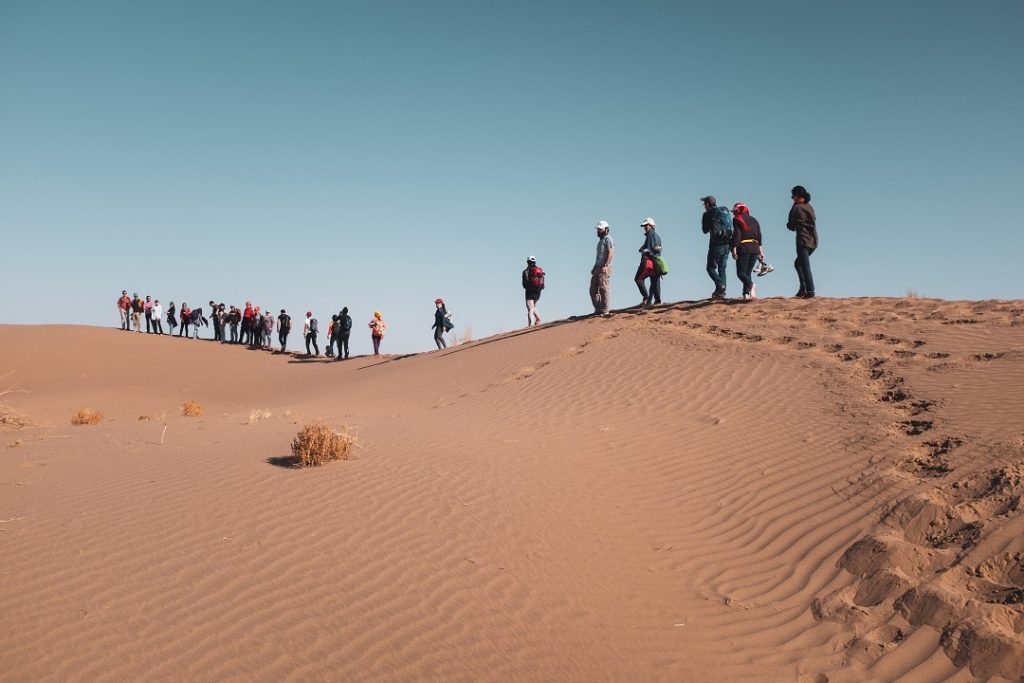
Iranians are one of the nicest people you’ll ever come across! They perfectly showcase the vitality and fluidity of the Persian spirit. They’re outgoing, fun-loving people who know how to enjoy life. They like nothing more than spending time together, whether it’s parties, family gatherings or picnics – show Iranians a patch of green, and they’re sure to get out the picnic blanket and the tea flask.
Iranians are also big on music and dancing. They will always find a reason to celebrate and break out in a dance. People join in and sing in groups in all sorts of places; in parks, under ancient bridges, and around popular tourist attractions.
One thing you’d probably find intriguing about Iranians is that they conduct themselves very differently in public compared to private. Don’t be shocked to see women in without hijab in the company of their friends and families – the Islamic social codes dictated by the government are mostly at odds with the more liberal outlooks of society in general.
Making small talk or striking up friendships is probably the easiest thing you can do in Iran. Iranians love meeting new people and enjoy entertaining guests. They always reserve the best for their guests and treat them with the utmost respect and affection. This warm hospitality is deeply rooted in Persian culture, where guests are considered friends of God. And as a tourist visiting Iran, you are definitely considered a guest of the nation, and people will go out of their way to make you feel comfortable or welcome.
Don’t be surprised if you are approached with questions about your nationality and how you came to visit Iran or if you receive an invitation to tea, food, or even a homestay from complete strangers or people willing to accompany you to your destination when you ask for an address – it comes from a place of genuine curiosity and a willingness to help. If the opportunity does present itself, don’t be shy – seize it. It is the perfect chance to interact with locals and learn about the Iranian culture.
8. Affordability
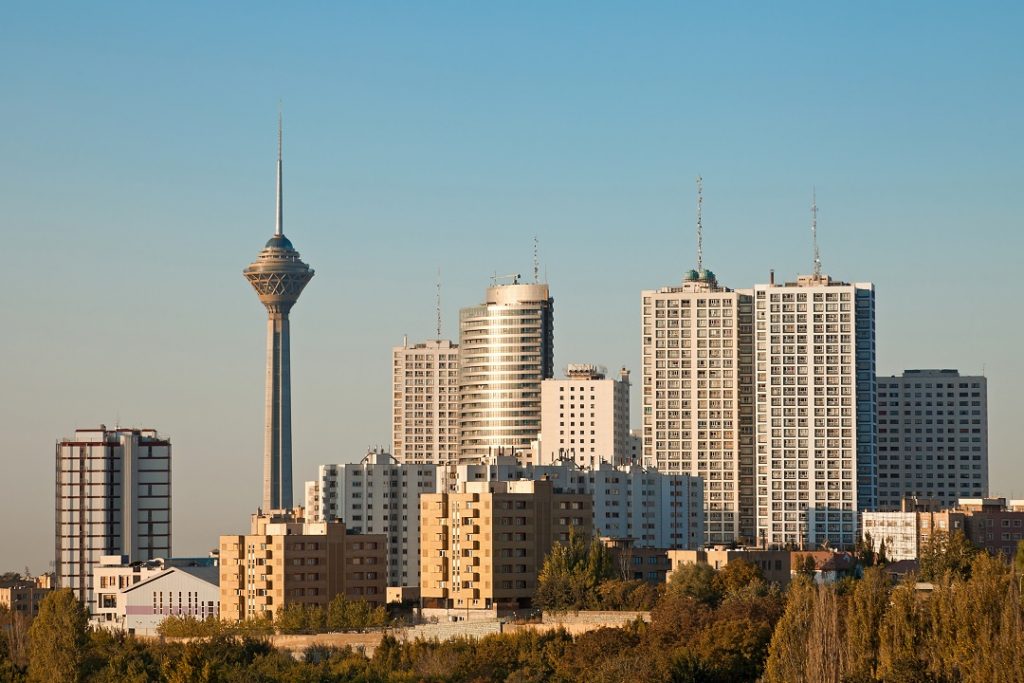
When planning for a trip, cost is one of the key factors considered. Often, we have put off a destination because it exceeds our budget. Fortunately, Iran is one of the cheapest places to visit, especially for backpackers and budget travellers. Due to the ongoing economic sanctions, the Iranian Rial stands at an all-time low against international currencies such as the US Dollar and Euro. This makes everything from accommodation to transportation and food exceptionally cheap.
In recent years, ecotourism has become very popular among Iranians, and many old homes have been converted into historic hotels and B&Bs. A stay at one of these hotel boutiques can cost as little as 10 dollars. You can even find hostels and hotels for as cheap as $5 a night, breakfast included.
Food can cost anywhere between $1 to $10, depending on whether you are going for street food or fine dining. Travelling around Iran is also cheap; an average coach ticket will cost you around $4; the price can go up and down depending on the distance. You can use public transportation or Snapp – the Iranian version of Uber to travel around the city. All these factors make Iran a very affordable destination for travellers seeking a fantastic travel experience.
One thing to keep in mind – the currency! In Iran, you have an official currency, the Rial, and the unofficial currency: Toman, used by Iranians in day-to-day life. This might seem confusing at first, but it’s not really that complicated – one Toman is equivalent to 10 Rials. To convert Rial into Toman, just take one zero off, and you’re good to go. To ensure you’re paying the correct amount, double-check with vendors that the price they’re giving you is in Toman. Another important note is that your bank cards do not work in Iran, so make sure you bring enough cash.
A Final Word
It is impossible to squeeze all the beautiful details about Iran into a single blog post. We have highlighted the exceptional qualities and potential of this magnificent country. But to understand it better and form a fair judgement, there’s no way but to make the trip yourself and see all its charm and splendour up close and in person.


